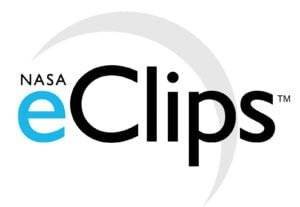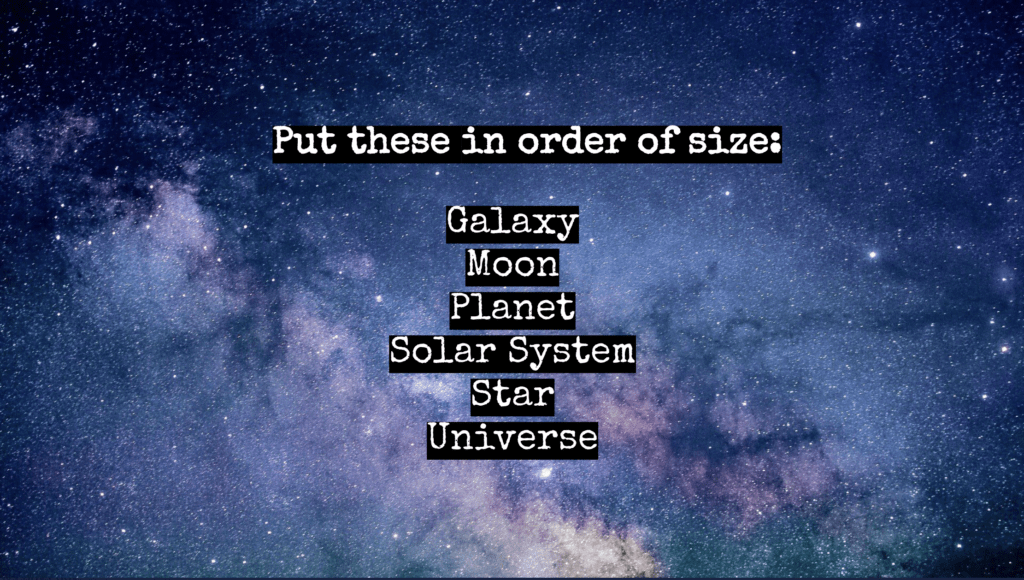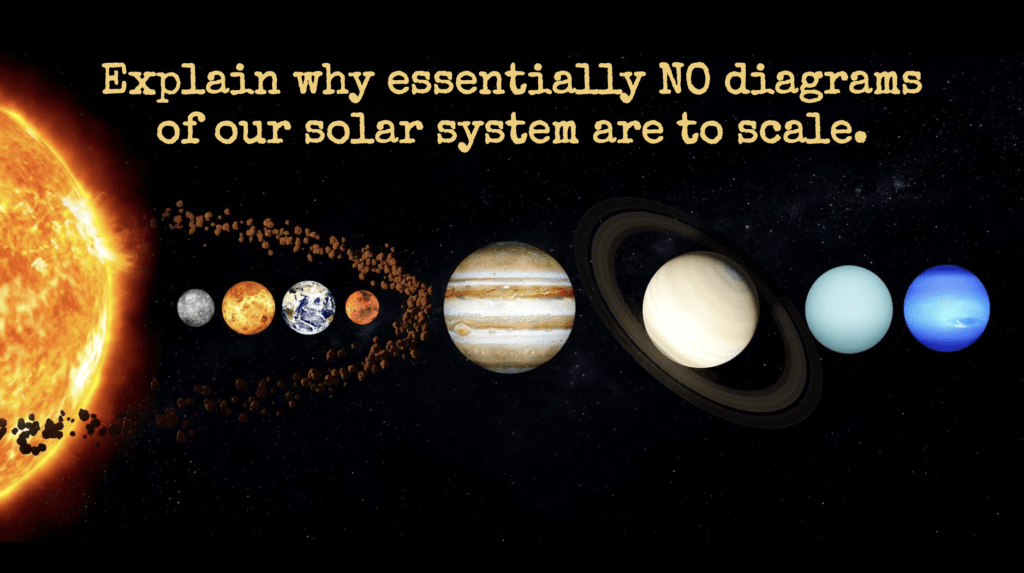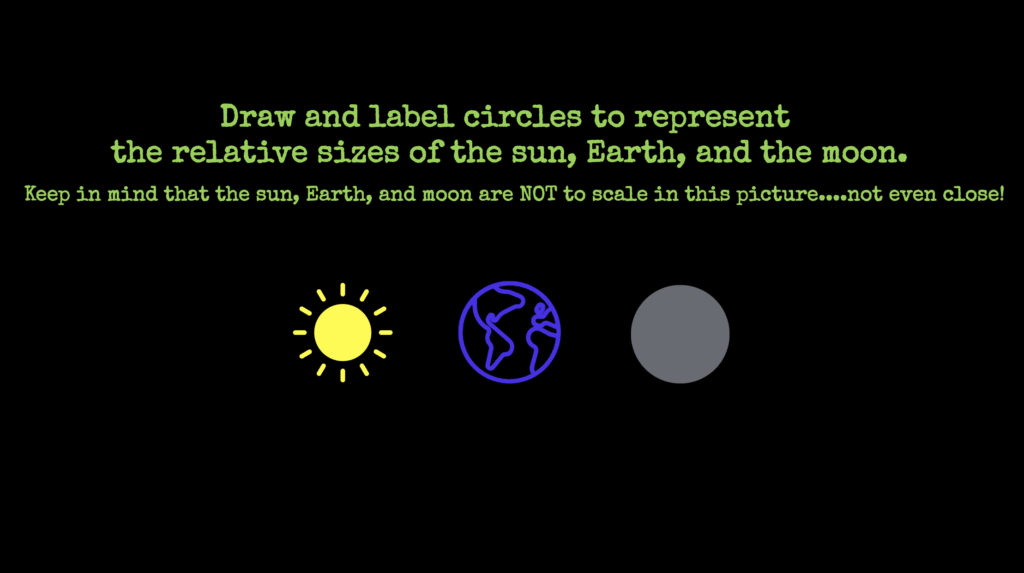For optimal viewing experience, it is recommended to access this page on a computer or large tablet.
BELLRINGERS
ESS1: Earth's Place in the Universe
MS ESS1-3
Analyze and interpret data to determine scale properties of objects in the solar system.
- Put these objects in our solar system in order of size.
- Put these in order of size: Galaxy, Moon, Planet, Solar System, Star, Universe
- Explain reasons why this diagram of our solar system is misleading.
- Exlplain why no diagrams of our solar system are to scale.
- Draw and label circles to represent the relative sizes of the sun, Earth, and the moon.
- How does the sun (size and brightness) look from Mercury and Neptune?
- What is meant when it's said that our galaxy is 100,000 light years across?
- Why is it impossible to take a real picture of our galaxy?
- How long would it take to travel to Mars?
- How long would it take to travel to Neptune?
- How long would it take to travel to the closest star outside our solar system?
- How long would it take to travel to the closest star outside our solar system?
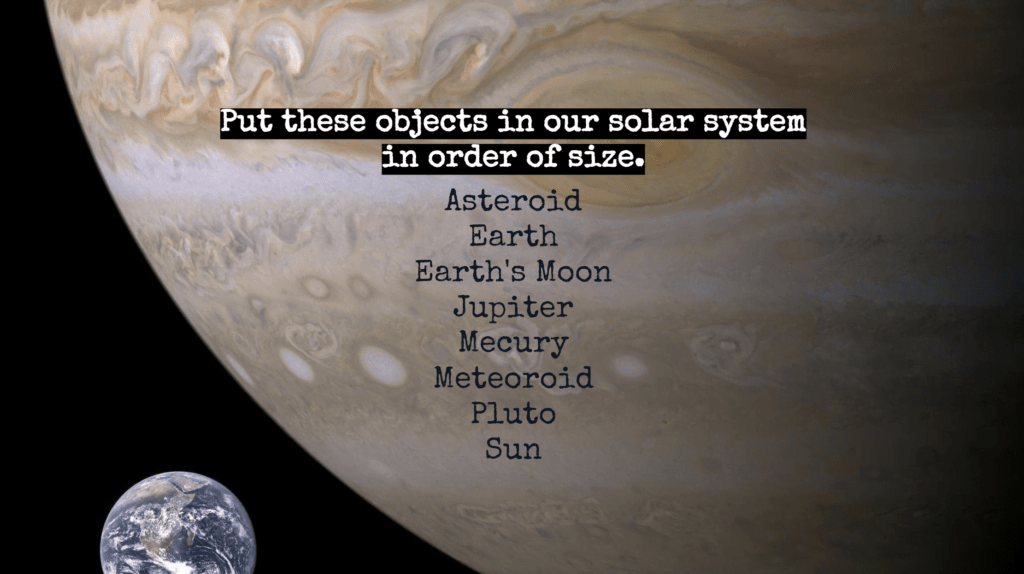
Common Misconceptions
- The moon is large relative to Earth (as often shown in graphics).
- In general, the sizes and distances show in graphics of the solar system are accurate.
- Earth is the largest object within our solar system.
- Our solar system is the same as our galaxy.
Common Misconceptions
- The moon is large relative to Earth (as often shown in graphics).
- In general, the sizes and distances show in graphics of the solar system are accurate.
- Earth is the largest object within our solar system.
- Our solar system is the same as our galaxy.
Common Misconceptions
- Humans could travel to any of the planets within our solar system in days or months.
- The moon is large relative to Earth (as often shown in graphics).
- In general, the sizes and distances show in graphics of the solar system are accurate.
- Earth is the largest object within our solar system.
Common Misconceptions
- The moon is large relative to Earth (as often shown in graphics).
- In general, the sizes and distances show in graphics of the solar system are accurate.
- Earth is the center of our solar system.
- Earth is the largest object within our solar system.
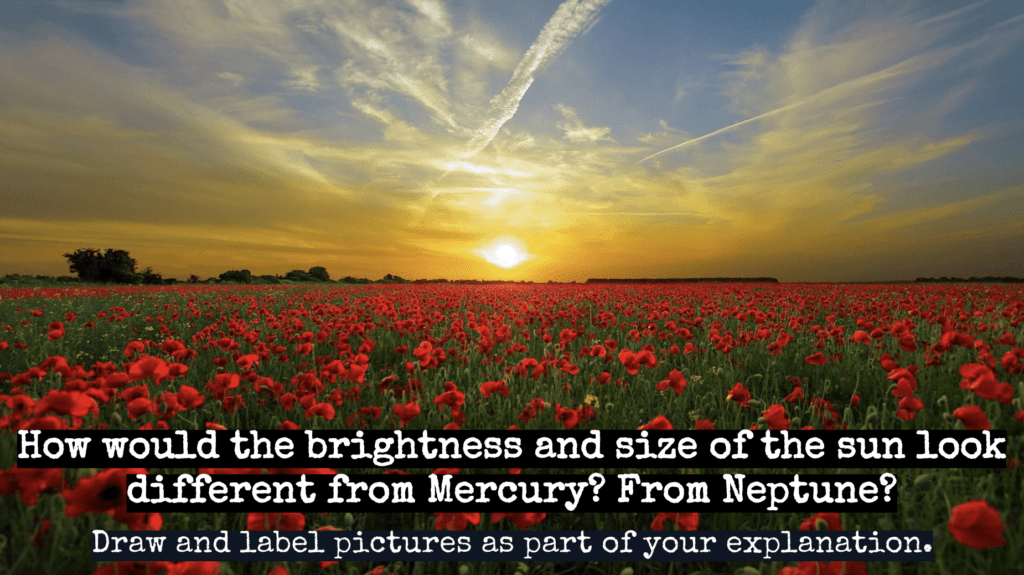
Common Misconceptions
- In general, the sizes and distances show in graphics of the solar system are accurate.
- Earth is the center of our solar system.
Additional Resources
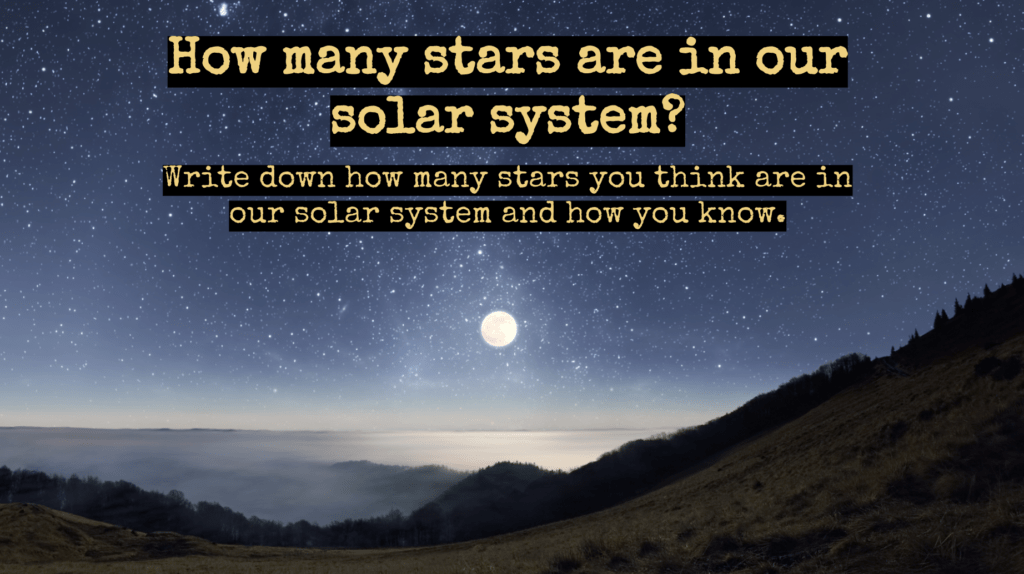
Common Misconceptions
- There are many stars in our solar system.
- Some stars are closer to Earth than some planets in our solar system.
- The sun is not a star.
Additional Resources
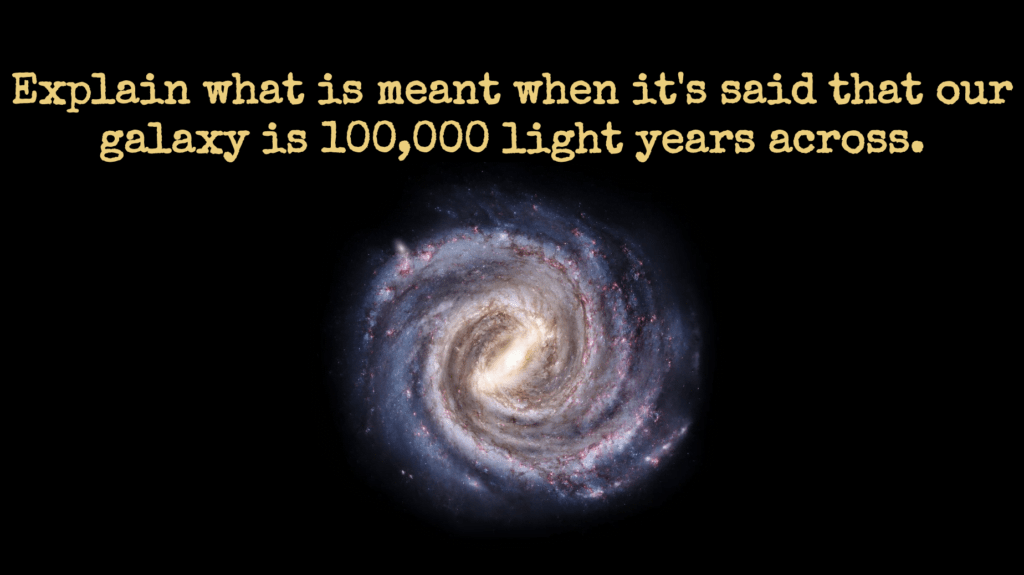
Explain what is meant when it's said that our galaxy is 100,000 light years across.
Common Misconceptions
- Humans could travel to any of the planets within our solar system in days or months.
- In general, the sizes and distances show in graphics of the solar system are accurate.
- Our solar system is the same as our galaxy.
- Other galaxies may be within our own galaxy or solar system.
- Light year is a unit of time.
Additional Resources
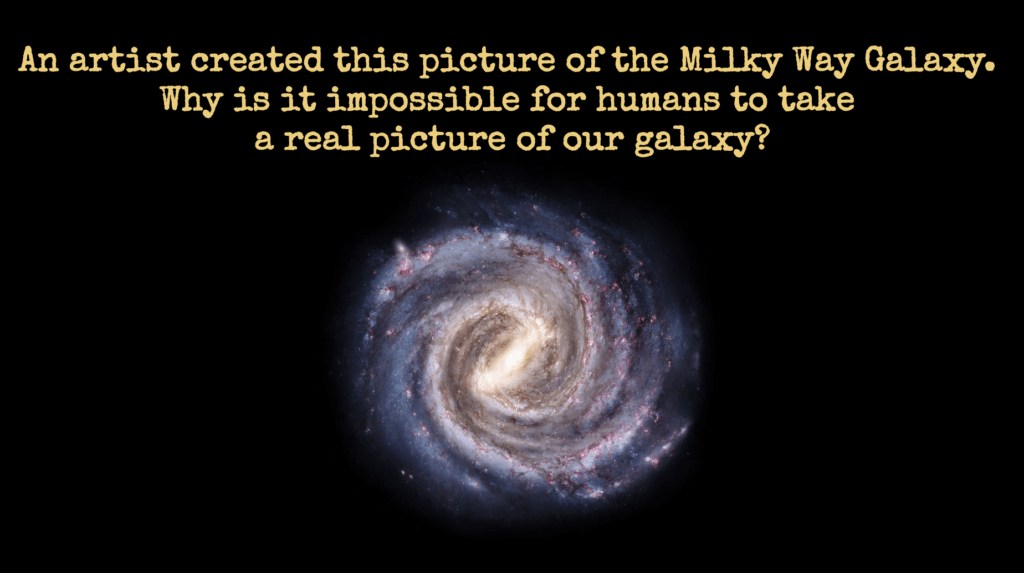
An artist created this picture of the Milky Way Galaxy. Why is it impossible for humans to take a real picture of our galaxy?
Common Misconceptions
- Humans could travel to any of the planets within our solar system in days or months.
- In general, the sizes and distances show in graphics of the solar system are accurate.
- Our solar system is the same as our galaxy.
- Other galaxies may be within our own galaxy or solar system.
- Light year is a unit of time.
Additional Resources
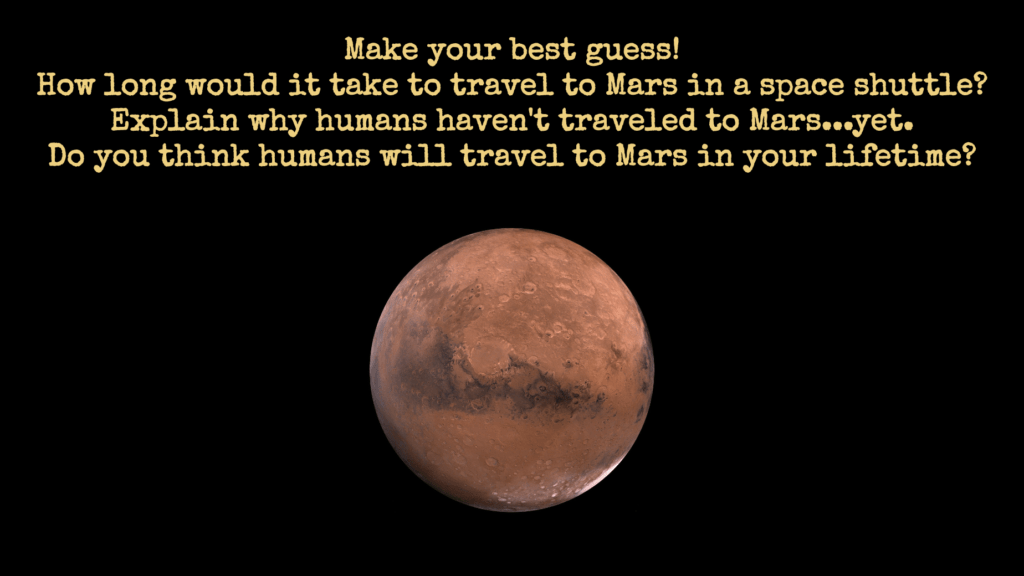
Do you think humans will travel to Mars in your lifetime?
Common Misconceptions
- Humans could travel to any of the planets within our solar system in days or months.
- In general, the sizes and distances show in graphics of the solar system are accurate.
Additional Resources
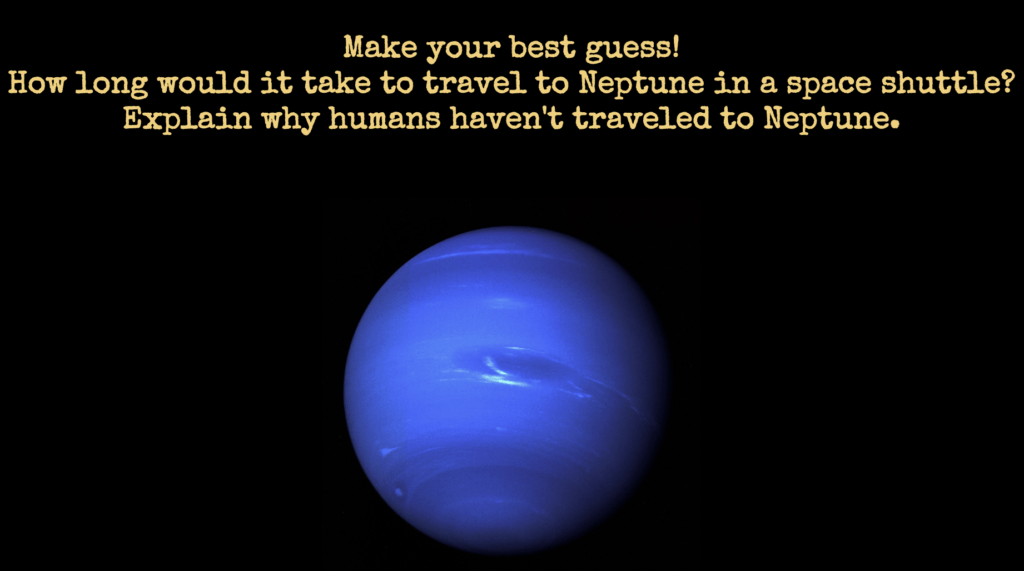
Common Misconceptions
- Humans could travel to any of the planets within our solar system in days or months.
- In general, the sizes and distances show in graphics of the solar system are accurate.
Additional Resources
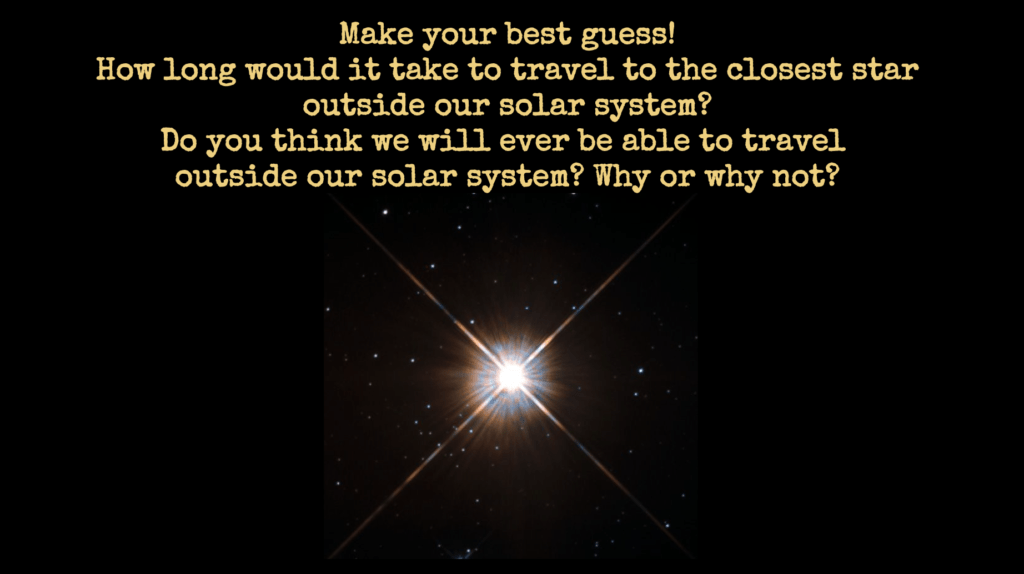
Make you best guess! How long would it take to travel to the closest star outside our solar system?
Do you think we will ever be able to travel outside our solar system? Why or why not?
Common Misconceptions
- Humans could travel to any of the planets within our solar system in days or months.
- In general, the sizes and distances show in graphics of the solar system are accurate.
- There are stars, other than the sun, within our solar system.
- Our solar system is the same as our galaxy.
- Pluto is farther than the stars.
Additional Resources
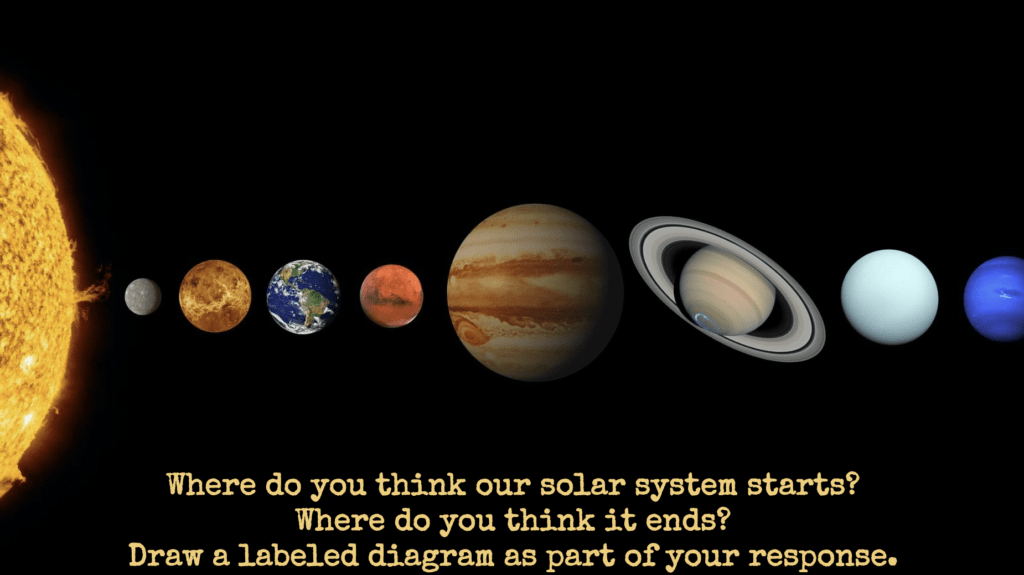
Where do you think our solar system starts? Where do you think it ends? Draw a labeled diagram as part of your response.
Common Misconceptions
- Humans could travel to any of the planets within our solar system in days or months.
- In general, the sizes and distances show in graphics of the solar system are accurate.
- Earth is the center of our solar system.
- Our solar system is the same as our galaxy.
- Pluto is farther than the stars.
- Other galaxies may be within our own galaxy or solar system.

